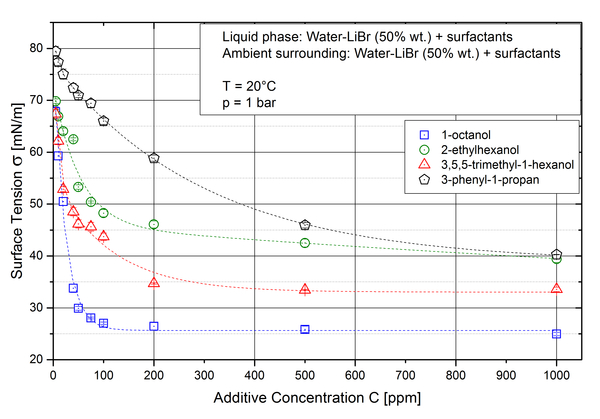WP3-2: Augmentation of closed-loop Absorption / Regeneration units
Numerical investigation on closed adsorption systems
Hosted by: | Univerisity of Kassel Technical Thermodynamics |
|---|---|
Student: | Federico Lonardi |
Started: | 1/08/2014 |
Supervisor(s): | Andrea Luke, Prof. Dr.-Ing. |
WP3-2: Augmentation of closed-loop Absorption / Regeneration units Applications and General Description
Absorption cycles are an interesting alternative to common compression cycles because of the utilization of solar heat and industrial waste heat instead of electrical energy. Unfortunately, the influence of many design parameters on the coupled heat and mass transfer in absorption cycles is not totally understood so far. In this research project the effect of sorption materials, such as ionic fluids or additives like nanoparticles, on the wettability and heat and mass transfer in absorption / regeneration units will be investigated experimentally. The geometrical design parameters of the units will be varied. The investigations are focused on the interaction between sorption material and geometrical design, which is unknown so far. Further, the effects of ageing fluids and the fouling of surfaces will be considered (chemistry). Based upon the experimental findings the influence of investigated design parameters should be included in a model of coupled heat and mass transfer in absorption / regeneration units.
PhD Project
The aim of the SHINE PhD project is to investigate geometrical modifications of the absorber and regenerator of absorption chillers because these units have been identified as the limiting components of such a system. The PhD study will focus on experimental investigations, but also include modeling of the coupled heat and mass transfer in those units.
Introduction
When there is a cool demand and low temperature heat is available, absorption chillers can be used instead of traditional vapor compression chillers. This leads to a lower consumption of primary energy.
Unfortunately, reliability and efficiency of absorption chillers is not competitive with traditional compression chillers. Among the main components of these cycles, absorber has been identified as the limiting one.
Therefore, a better understanding of the heat and mass transfer mechanisms in the absorber has to be performed.
Experimental setup / numerical tools
- Tube surface characterization (material and roughness)
- Surface energy and local wettability
- Overall wettability
- Heat and mass transfer coefficients
- Other parameters (tube spacing, tube diameter, etc.)

Status & aims of the PhD study
This study has been carried out in the past years by researchers at University of Kassel.
- Tubes with a certain surface treatment lead to better wettability and heat transfer coefficient, when compared to traditional polished tubes;
- A lot of mechanisms that act on mass and heat transfer still have to be fully understood.
The aim of this PhD study is therefore:
- Investigate on the influence that tube surface structure, surface energy, wettability and type of working fluids have on the overall efficiency of the absorption process.

